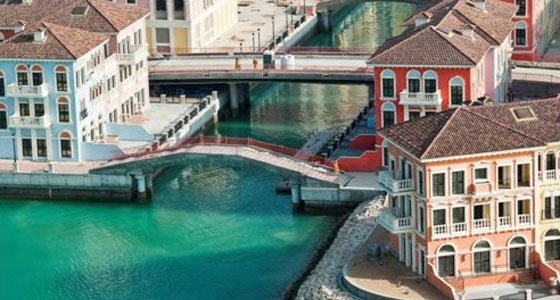Qatar’s star is rising in the international universe of business and finance and using its gravitational force to have investments fall into its orbit, capturing interest for its boundless resources and capabilities and setting a course of infinite returns.
According to Qatar Economic Outlook 2012–2013 (QEO), GDP growth forecast will be 4.5% in 2013 following a 6.2% in 2012. But don’t be fooled. QEO states that growth heavily depends on activity outside oil and gas sectors.
Construction is set to rebound, boosted by an impressive investment in infrastructure. Oil prices are likely to keep supporting fiscal and external payments strength, despite sizeable planned increases in recurrent and capital outlays by the government. Consumer price inflation may edge up next year, but given that global commodity prices are seen remaining soft, inflationary pressures stemming from the international economy will probably be mild.
Dr. Saleh Al Nabit, Secretary General of GSDP says, “QEO sees strong momentum coming from expansion of manufacturing, construction and services. The share of oil and gas production in aggregate output will, as earlier expected, now begin to recede. To sustain growth and economic diversification, it will be important that the measures identified in the National Development Strategy—to improve economic efficiency and strengthen private sector enterprise—are pursued vigorously.”
GDP will slightly drop but surplus will sustain
According to Al Nabit, the overall growth is expected to remain robust in 2013. The non-hydrocarbon sector is seen maintaining more momentum through to 2013, but oil and gas growth will taper off as yields from maturing oil fields resume their decline.
In general, changes in hydrocarbon prices have an important influence on Qatar’s economy. But with oil prices likely to stabilize or even drift down in 2013, the forecast nominal GDP growth of 4.7% is unlikely to stray far from expected volume growth of 4.5%.
The budget for 2012-13, announced at end-May, sets a substantial increase in spending (28% over the 2011-12 budgeted figure) and is planned on a conservative assumption of $65 per barrel of oil (against $55 for the previous two fiscal years’ planning assumptions).
Despite slowing growth, GSDP says the country would continue to see a budget surplus. The fiscal surplus in 2013 is predicted to come down to 4.8% as hydrocarbon income stabilizes and spending continues growing, along with the economy and population. As emphasized in Qatar’s National Development Strategy 2011–2016, the challenge remains to broaden the revenue base and to shrink the non-hydrocarbon deficit (the overall surplus that remains when hydrocarbon revenue is removed).
Qatar’s external surpluses on the current account of the balance of payments will stay in double digits. The surplus is expected to be 20.6% of nominal GDP in 2013. Growth of export revenue will slow as production of oil and gas plateaus but import demand will keep rising, both to meet project needs and to support a larger population. Qatar’s current account surpluses will continue adding to the net international investment position and supporting the accumulation of funds for the future.
Construction activity to gain momentum
Between 2012 and 2019, Qatar has planned infrastructure investments in the region of $130 billion. In the near term—2012 and 2013—it may well spend some 10% of its GDP on infrastructure and total project disbursements, or about $39 billion. New project activity will no doubt make heavy demands on labor and require new workers, lifting Qatar’s population in the near term but making the non-Qatari working population more transient, as many of the workers will probably leave when projects end. Knock-on effects of project spending on income and demand in the rest of the economy will be dampened by large leakages in the form of imports of materials and capital goods, as well as remittances of wage and other income.
Gains in oil production expected on the mid-term
According to QEO, current investments in enhanced and incremental oil recovery are expected to yield gains in oil production, but this is unlikely to register in greater production until 2018. Reservoir and field-wide studies are under way at three oil fields (Bul Hanine, Dukhan and Maydan Mahzam). It is reported that the Bul Hanine study indicates significant additions to reserves. That field is in the pre-FEED (front-end engineering and design) development phase. The impact of the Barzan project on the production of lean gas (gas that contains few or no liquefiable liquid hydrocarbons) will not be felt until 2014–2015.
Unlike hydrocarbons, the non-oil and gas sector should maintain its momentum in 2013. Output growth is forecast to stay healthy at 9.5%, with construction posting 10.0% expansion. Growth in manufacturing, utilities and services is also likely to be robust. By end- 2013, the Pearl GTL facility will probably be operating at close to full capacity, achieving full output in early 2014.
Similarly, work to ease bottlenecks in older refineries (Ras Laffan Condensate 1 refinery and Oryx GTL plant) will also contribute to overall manufacturing growth. Beyond the outlook period, Ras Laffan Condensate 2 refinery will begin construction in 2014, and is expected to be operating by 2016. And a mixed feed cracker petrochemical plant, with construction starting by 2013, will be commissioned by 2016. Feed for these projects is available and has been committed.
ifpinfo
9 January






















































